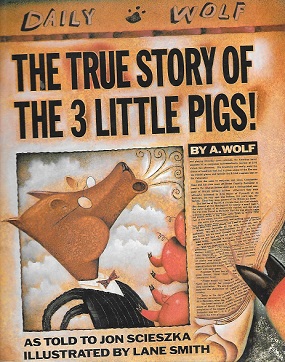Say
Calkins, Ehrenworth, Lehman - Pathways to the Common CoreBeers - When Kids Can't Read
Milner, Milner, Mitchell - Bridging English
Gallagher - Readicide: How Schools Are Killing Reading and What You Can Do About It
Gallagher introduces the notion of "the sweet spot" in regards to reading instruction, and discusses the difficulty in reaching this point without boring students to tears or leaving them unengaged and uninvested with a given text. Bridging English's section on formal analysis provides a list of literary elements for instructors to teach. Many of my high school English teachers would try too hard to cover each of these elements for every story and every poem, rather than focusing on one or two that the text does extremely well. For my lessons I try to hone in on one new literary device for a text, while also bringing in previously covered devices that are relevant to reading the text.
When Kids Can't Read covers pre-reading, during-reading, and post-reading strategies which aim to engage, entertain, and enhance students' reading experiences.Throwing a tome of Shakespeare at a class of freshman is not going help anyone. Even on the off chance that a few students try to read one of Shakespeare's plays, it is unlikely that they would make much sense of it without tons of additional research. That kind of lazy teaching puts more responsibility on students than it does the teacher.
Front-loading and pre-reading strategies in particular give a sense of focus and purpose for students reading a text for the first time. I am currently (trying my damnedest) to think of pre and post reading activities for a presentation my 3rd period freshmen class will be sitting in on next week. The presentation is on George Stinney, who was executed at age 14 in South Carolina back in 1944. The tragic nature of the young man's death and his closeness of age to the freshmen add increased importance to front-loading the presentation.
Do
Daily
Lesson Plan
Daily Lesson Plan
Instructor And Room #:
Mr. McMicken, Room A13
|
Date & Start-Stop
Times:
September 25, 2014,
10:44-12:22 PM
|
Subject and Block/Period:
CP English I 3rd/4th
|
Unit and Topic:
American Short
Stories
Symbolism in
“Cask of Amontillado”
|
||
Student Objectives:
Today
I am: learning about symbolism.
So I can: understand that images of underlying meaning.
I’ll
know I’ve got it if I can: identify symbols and create a coat of arms using
symbols for what I value.
|
SC Standards/PACT/Common Core
CCSS.ELA-Literacy.L.9-10.4
Determine or clarify the meaning of unknown and multiple-meaning words and phrases based on grades 9-10 reading and content, choosing flexibly from a range of strategies.
CCSS.ELA-Literacy.L.9-10.4.a
Use context (e.g., the overall meaning of a sentence, paragraph, or text; a word's position or function in a sentence) as a clue to the meaning of a word or phrase.
CCSS.ELA-Literacy.SL.9-10.1
Initiate and participate effectively in a range of collaborative discussions (one-on-one, in groups, and teacher-led) with diverse partners on grades 9-10 topics, texts, and issues, building on others' ideas and expressing their own clearly and persuasively.
CCSS.ELA-Literacy.RL.9-10.3
Analyze how complex characters (e.g., those with multiple or conflicting motivations) develop over the course of a text, interact with other characters, and advance the plot or develop the theme.
CCSS.ELA-Literacy.W.9-10.7
Conduct short as well as more sustained research projects to answer a question (including a self-generated question) or solve a problem; narrow or broaden the inquiry when appropriate; synthesize multiple sources on the subject, demonstrating understanding of the subject under investigation. |
||||
Items to Display as
Agenda: (Activities)
Mentor Sentence 5 (Step
2 and Rearrange)
Finishing “Cask of
Amontillado”
Complete Reliability of
a Narrator chart
SSR
Celebrations
Purpose Statement
Coat of arms Activity
|
|||||
Purpose: Opening
Statement of Value for Day’s Lesson—the WHY
Symbolism
is prevalent in every facet of modern life.
Being able to understand and relate to symbolic references allow
students to critically analyze everyday media, everything from their favorite
film to an advertisement for a new product.
|
|||||
Lesson Procedures:
(Introduction, Development, Conclusion)
Introduction (40-45
minutes)
o
Read the second half of the story, stopping
intermittently to ask students about the actions of the narrator and
Fortunato, and add student responses to the overhead chart.
o
Finish the My Conclusions section of the chart
after completing the story
·
Transition to SSR after finishing the story
and discussing the ending. (23 minutes)
o
Have students get out their novels for SSR and
set a timer for 20 minutes. After the
20 minutes are up have students discuss their reading for 3 minutes with
their class group/partner.
Development
Conclusion
|
|||||
Materials
and Resources:
·
Texts
o
copies of “Cask of Amontillado” for each student
·
Technology
o
Projector
o
SMARTboard or whiteboard
o
Montresor family crest image
o
Coat of Arms activity prompt
·
Handouts
o
Mentor sentence 5 (given previously)
o The Reliability of a
Narrator (given previously)
·
Other
o Blank computer paper and
markers
|
|||||
Assessments and
Assignment:
Mentor
Sentence 5 will be collected alongside MS 4 and MS 6, which will be graded
together on a 30 point scale, 10 points for each MS.
The
student coat of arms will be graded on a 20 point scale where students will
receive 10 points for their coat of arms or crest and an additional 10 for
their explanation.
| |||||


